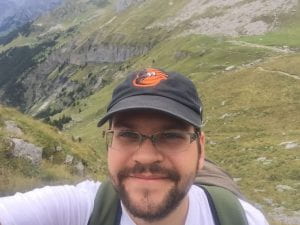Ryan graduated Magna cum laude in chemistry in 2006 from Sonoma State University. As an undergraduate, he worked to purify chromium binding proteins from bovine liver after hexavalent chromium exposure. In the fall of 2006, he moved to Baltimore, where he joined the research group of Kenneth Karlin at the Johns Hopkins University. Here his research focused on defining the chemistry of mononuclear copper-dioxygen species. As a graduate student, he helped establish a new research group at Ewha Womans University in Seoul Korea and worked as Global research fellow at Osaka University with Shunichi Fukuzumi. In 2013 after graduating with his PhD, he joined the laboratory of Valeria Culotta. Ryan received a Kirschstein-NRSA NIH post-doctoral fellowship aimed to describe the biochemistry and cell biology of Candida albicans SOD5. This enzyme represented a novel class of extracellular Cu-only Superoxide dismutase enzyme that is required for fungal virulence. In 2016 Ryan moved to Basel Switzerland to work with Thomas Ward in the area of artificial enzyme design. Ryan developed a new platform for a new generation of artificial enzymes based on biotin-streptavidin technology.
Ryan joined the faculty at Texas State University in the fall of 2019. His research is in bioinorganic chemistry and the current research projects in his group are aimed at 1. Understanding metal-dynamics and the role of metalloenzymes at the host-pathogen interface. 2. The design proteins and enzymes to assist in the detection, binding and clearance of microplastic substrates.
In his free time, Ryan enjoys hiking, fishing, cooking and spending time with his family. His favorite dishes are pizza, spaetzle, blue crabs, and bbq. His favorite pizza combinations are caramelized onions, Copa, and mozzarella. Occasionally, he enjoys good Alsatian wine and Swiss chocolate.
